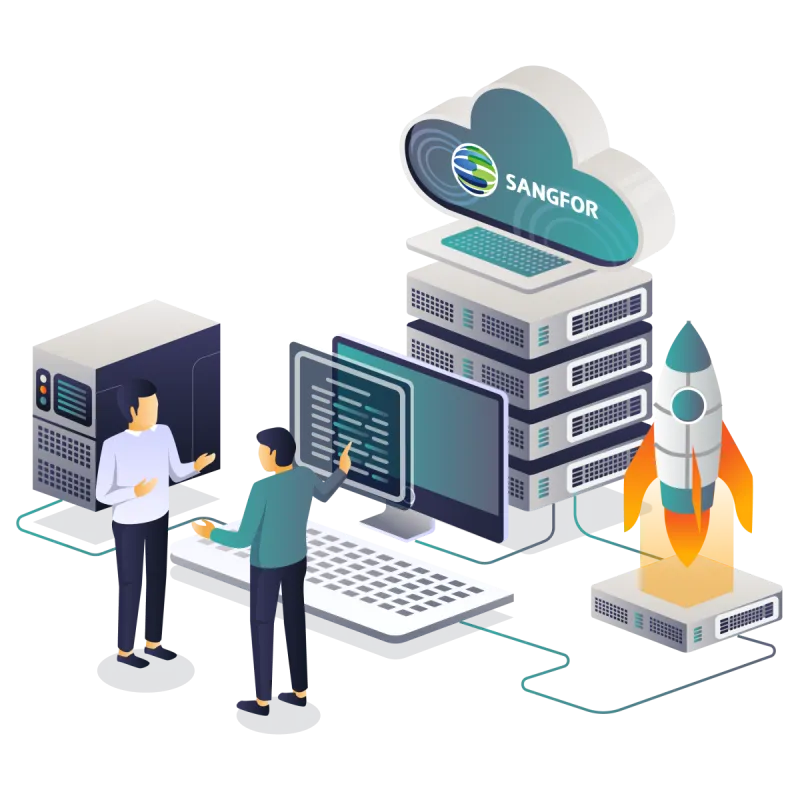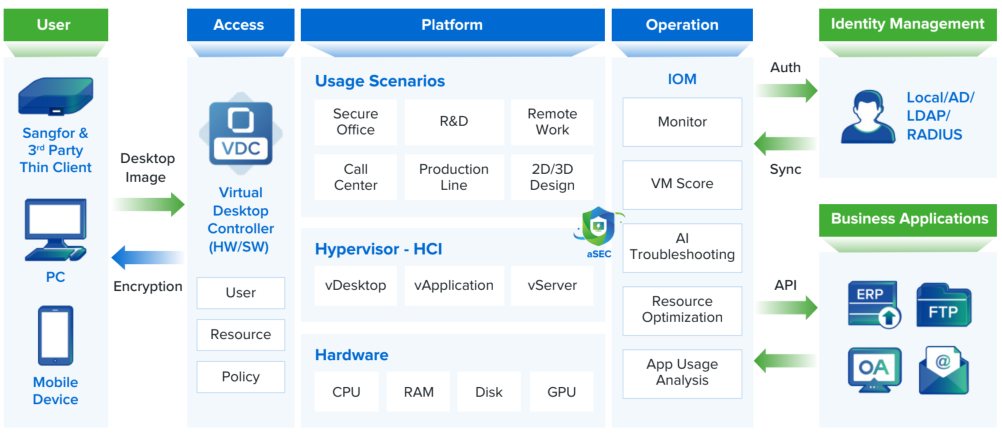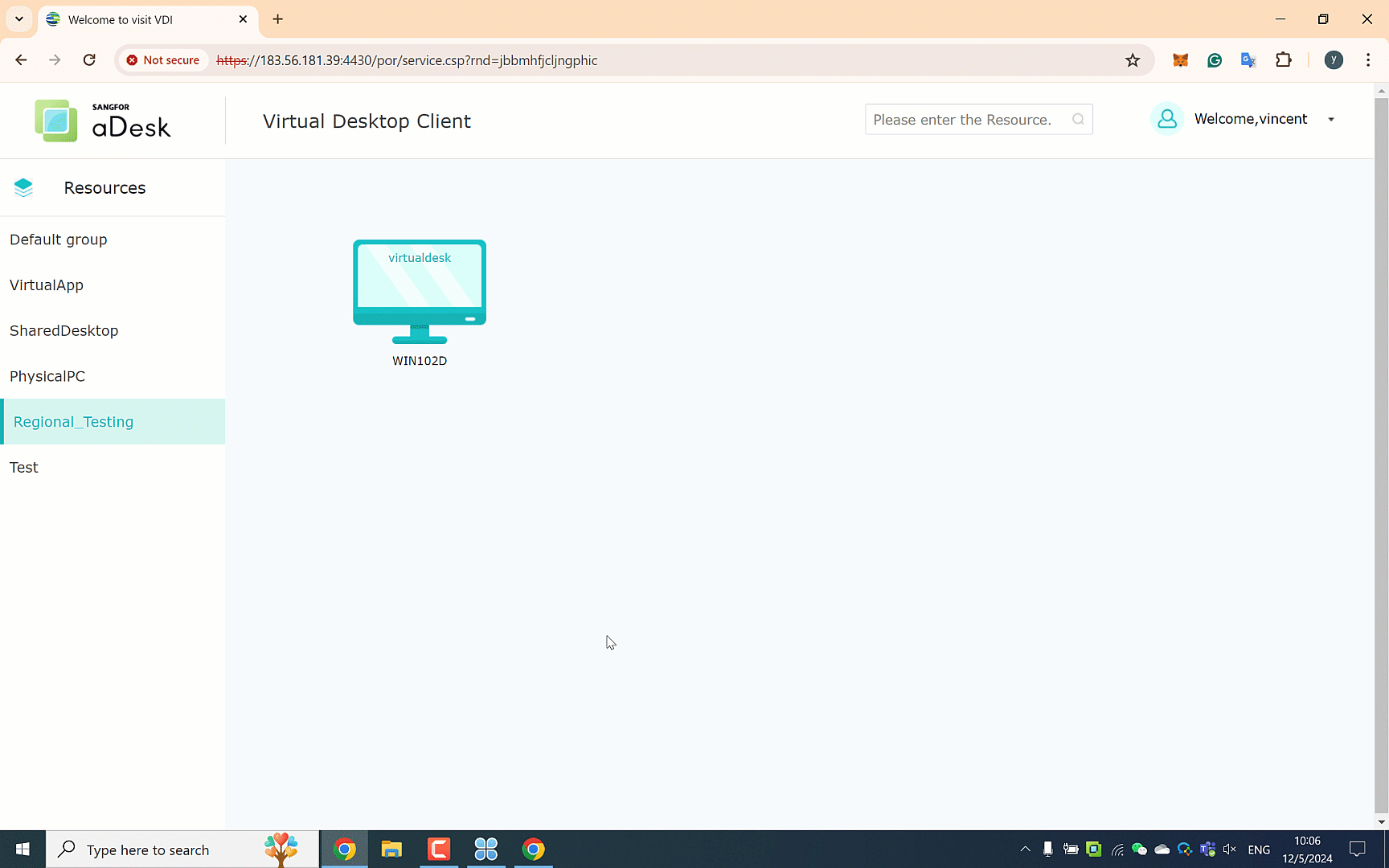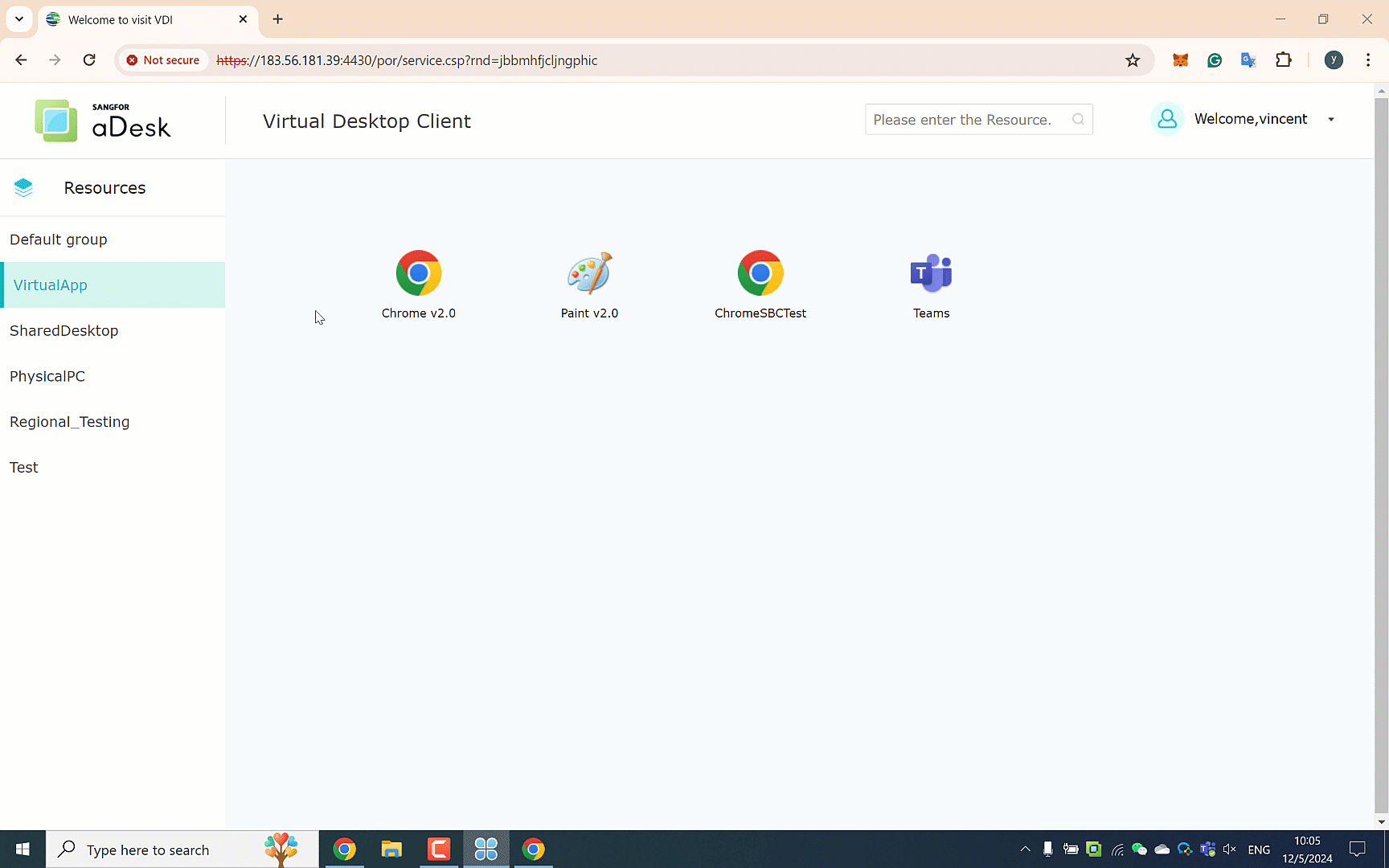Values:
- Rapid deployment and efficient desktop operations
- Endpoint data protection
- Reduce the costs of IT human resources, hardware replacements, and electricity
- Deployment on-demand and linear expansion
Sangfor aDesk is a one-stop Virtual Desktop Infrastructure (VDI) solution that helps your business evolve effortlessly to a digital workspace environment, suitable for secure office, work-from-anywhere scenarios, and more.
The extremely simple architecture makes it easy for IT engineers of any caliber to manage, significantly increasing IT operations and maintenance efficiency. Self-Developed transmission protocols and GPU technology collaborated with Nvidia guarantee a seamless desktop experience, boosting user productivity. End-to-end security mechanisms effectively protect your data from external attacks like ransomware, data leakage by internal users, and data loss caused by disk errors while satisfying business security and compliance needs.




Daily Office/Secure Office
Values:
Work from Anywhere
Values:
Call Center/Service Hall
Values:
Student Computer Lab
Values:
Production Line
Values:
2D/3D Design
Values:
Hospital
Values:
Values:
Values:
Values:
Values:
Values:
Values:
Values:









At DCCI Summit 2025 Hanoi, Sangfor shared AI-ready infrastructure insights and cloud strategies, drawing 2,000+ industry leaders with Viettel IDC.
Join our webinar to explore Sangfor’s Full-Stack Private Cloud, navigate VMware updates, and gain insights for a secure, cost-efficient, and innovative IT future.
Sangfor aDesk VDI 5.9.6 offers a competitive alternative to Citrix and VMware with improved Virtual App solutions and seamless migration tools. Join our webinar!

Compare Sangfor aDesk and Citrix XenDesktop/XenApp in 2025. Explore architecture, licensing, security, and user experience to choose the right VDI solution.
Compare Sangfor HCI and VMware head-to-head in 2025. See which HCI platform offers better simplicity, security, and value for growing IT environments.
Discover the top VPS hosting providers in 2025. Compare features, uptime, and scalability to find the right virtual server for your business needs.

Empower your business with Sangfor Backup Platform powered by Veeam—offering agentless backup, 1-click recovery, and simplified data management.
Sangfor named a Representative Vendor in Gartner’s 2025 HCI Guide, highlighting its innovation, global growth, and hybrid cloud capabilities.
Sangfor ranked as a top 3 HCIS vendor by revenue in Asia-Pacific for 2024, based on Gartner® Market Share Report. Leading in cloud and cybersecurity solutions.
Virtual desktop infrastructure (VDI) refers to the technology that delivers a virtual desktop image over a network to an endpoint, usually a PC or mobile device. The virtual operating systems is run and managed in a data center but functions as if it was running locally.